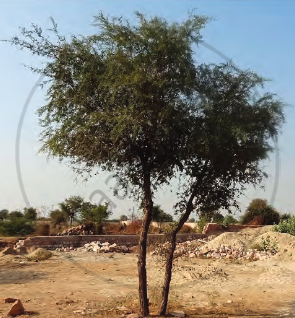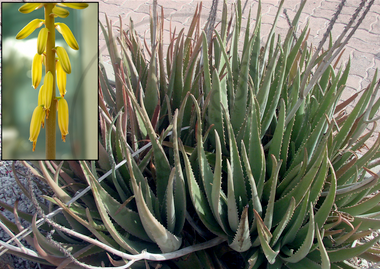Topics
Field Visit
Location and Extent
Physiography and Drainage
- Physical Divisions of India
- The North Indian Mountains
- The Himalayas
- North Indian Plains
- The Peninsular Indian Plateau
- The Indian Coastal Plains
- The Indian Islands
- Physiography of Brazil
- Brazilian Highlands
- The Great Escarpment in Brazil
- Coastline of Brazil
- Brazilian Plains
- Brazilian Island
- Drainage of Brazil
- Drainage Systems of India
- Himalayan Rivers
- Peninsular Rivers
Climate
Natural Vegetation and Wildlife
Population
Human Settlements
Economy and Occupations
Tourism, Transport and Communication
Geography - Physical Divisions of India
Identification of Physical divisions
- Identification of Physical Divisions
Geography - North Indian Mountains
Himalayas
Associated mountains
- Concept of Associated Mountains
Geography - North Indian Plain Region
Deserts
- Desert
Western Plains
- Concept of Western Plains
Central Plains
- Concept on Central Plains
Delta region
- Concept of Delta Region
Eastern Plains
- Concept of Eastern Plains
Geography - Peninsular Plateau Region
Chhotta Nagpur Plateau
- Concept for Chhotta Nagpur Plateau
Malwa Plateau
- Concept on Malwa Plateau
Maharashtra Plateau
- Concept for Maharashtra Plateau
Karnataka Plateau
- Concept for Karnataka Plateau
Telangana Plateau
- Concept for Telangana Plateau
Geography - Western Ghats and Eastern Ghats
Eastern Ghats
- Concept on Eastern Ghats
Sahyadries
- Concept on Sahyadries
Geography - Coastal Region
- Geography - Coastal Region
Eastern coastal plain
- Coastal Region - Eastern Coastal Plain
- Concept for Western Coastal Plain
Western coastal plain
- Concept for Western Coastal Plain
Geography - Indian Islands
- Geography - Indian Islands
Eastern Islands
- Indian Islands - Eastern Islands
Western Islands
- Indian Islands - Western Islands
Geography - Practical 1
Cartography
- Concept on Cartography
Geography - Practical 2
Two dimensional diagrams
- Two Dimensional Shapes
One dimensional diagrams
- Concept on One Dimensional Diagrams
Economics - Introduction of an Economy
Introduction of an Economy
- Economy
- Types of Economy
- Main Features of Economy
Economics - Basic problems of an economy solution
Solutions
- Concept for Capitalism
- Concept for Socialism
- Mixed Economy
Problems
- Introduction of Basic Problems of an Economy
- Problems- for Whom to Produce
- Problem - How Much to Produce
- Problem - by Whom to Produce
Economics - Inflation
Introduction
- Introduction of Inflation
Effects of inflation
- Effects of Inflation
Measures of Inflation
- Measures of Inflation
Causes of inflation
- Causes of Inflation
Economics - Public distribution system and consumer protection
- Measures of Inflation
Public Distribution system - meaning and explanation
- Public Distribution System - Meaning and Explanation
Introduction
- Introduction of Public Distribution System and Consumer Protection
Objectives of Public Distribution system
- Objectives of Public Distribution System
Remedial Measures
- Remedial Measures Public Distribution System and Consumer Protection
Consumer Protection
- Consumer Protection - Rights and Duties of Cunsumer, Food Adulteration
Drawbacks of Public Distribution system
- Drawbacks of Public Distribution System
Progress of Public Distribution system
- Progress of Public Distribution System
Notes
Tropical Thorny Forests and Scrubs:
These are also known as Tropical Thorn Forests.
(a) Climatic Conditions: These forests can be found in regions with annual mean temperatures between 25°C and 27°C, less than 47% humidity, and less than 50 cm of precipitation.
(b) Distribution: These forests are chiefly distributed in south-western Punjab, Haryana, Uttar Pradesh, central and eastern Rajasthan, Madhya Pradesh, Chhattisgarh, Gujarat, parts of Maharashtra, Karnataka, and Andhra Pradesh.
(c) Characteristic Features:
- These forests have Xerophytic (a plant that needs very little water) vegetation. Due to a lack of rainfall, the trees are stunted with large patches of coarse grasses.
- These forests have trees that have adapted themselves to survive in drought-like conditions and are called xerophytes. Acacia and babool trees, for example, have developed long tap roots that can reach deep groundwater resources and, as a result, can survive drought-like conditions.
- Acacia trees also have long thorns and a mutually beneficial relationship with stinging ants. When an animal takes a bite of the leaves, the ants attack the animal because they live in the thorns and eat the nectar the trees produce.
- For the majority of the year, the plants in these forests are leafless and look like scrub vegetation.
- The important trees found here include babool or acacia, date palm, ber, khair, neem, khejri, kanju, cactii, Kokko, etc.
(d) Economical Value:
- Ber fruit is eaten raw or made into pickles or beverages. Its wood is hard, strong, tough, and long-lasting. It is used to make bedstead legs, boat ribs, agricultural tools, charcoal, and other items.
- The bark and gum of the babool tree have medicinal value. Date palm is eaten raw and also used as an astringent, decoction, syrup, or paste for sore throat, cold, fever, and other ailments.
- The bark and roots of neem have medicinal properties. Neem oil, leaves, and extracts are used in the production of health and beauty products. It also serves as an insecticide.
|
Khejadi |
Aloe vera |
If you would like to contribute notes or other learning material, please submit them using the button below.


